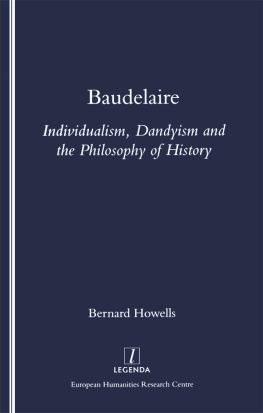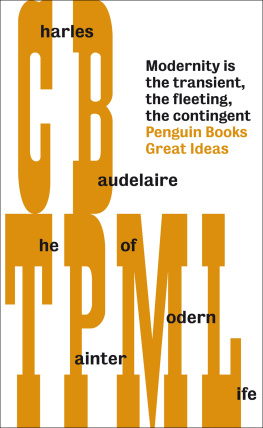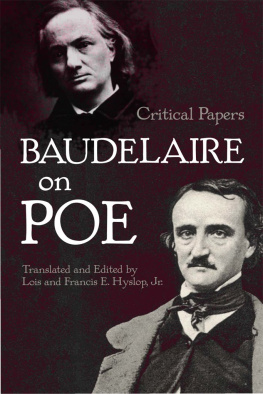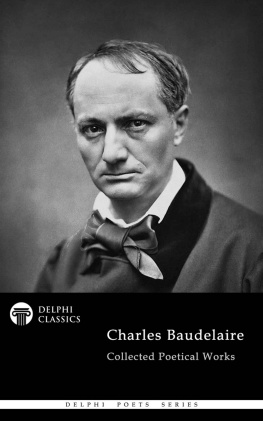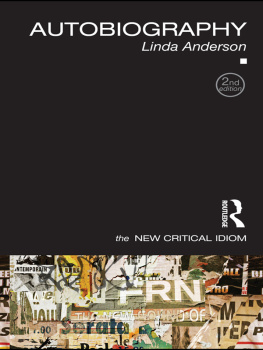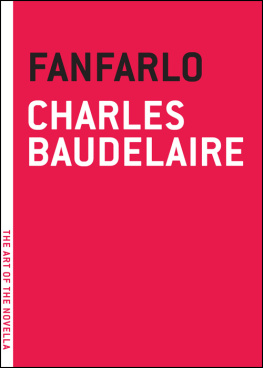REGARD FOR THE OTHER
Regard for the Other
AUTOTHANATOGRAPHY
IN ROUSSEAU,
DE QUINCEY, BAUDELAIRE
AND WILDE
E.S.BURT

Copyright 2009 Fordham University Press
All rights reserved. No part of this publication may be reproduced, stored in a retrieval system, or transmitted in any form or by any meanselectronic, mechanical, photocopy, recording, or any otherexcept for brief quotations in printed reviews, without the prior permission of the publisher.
Fordham University Press has no responsibility for the persistence or accuracy of URLs for external or third-party Internet websites referred to in this publication and does not guarantee that any content on such websites is, or will remain, accurate or appropriate.
Library of Congress Cataloging-in-Publication Data
Burt, E. S.
Regard for the other : autothanatography in Rousseau, De
Quincey, Baudelaire, and Wilde / E.S. Burt.1st ed.
p. cm.
Includes bibliographical references and index.
ISBN 978-0-8232-3090-7 (cloth : alk. paper)
ISBN 978-0-8232-3091-4 (pbk. : alk. paper)
1.AuthorsBiographyHistory and criticism.
2. Autobiography. 3. Other (Philosophy) in literature.
4. Self in literature. 5. Identity (Psychology) in
literature. 6. Death in literature. 7. Baudelaire, Charles,
18211867Criticism and interpretation. 8. Rousseau,
Jean-Jacques, 1712-1778Criticism and interpretation.
9. De Quincey, Thomas, 17851859Criticism and
interpretation. 10. Wilde, Oscar, 18541900Criticism
and interpretation. I. Title.
PN452.B87 2009
809.93592-dc2
2009008224
Printed in the United States of America
11 10 09 5 4 3 2 1
First edition
CONTENTS
ABBREVIATIONS
AE | Autrement qutreou au-del de lessence |
AP | Artificial Paradises |
C | Correspondance |
CL | Complete Letters |
DP | De Profundis |
EC | The Epistemology of the Closet |
GD | The Gift of Death |
HAH | Humanisme de lautre homme |
OC | Oeuvres completes (Baudelaire or Rousseau) |
OE | The Confessions of an English Opium-Eater |
PDG | The Picture of Dorian Gray |
In this book I have used the customary italic to indicate emphasis. Where the word or passage requiring emphasis appeared within material that was already in italic for another reason, bold italic indicates emphasis.
ACKNOWLEDGMENTS
Because this book had two widely separated periods of gestation, with one piece dating from an early monograph on Rousseauian autobiography that never saw light of day, I am overdue with thanks to some of those friends and colleagues who generously read, commented on, encouraged, or otherwise contributed to the writing of some part of this book. I have of each contributor a distinct and grateful memory: Tim Bahti, David Carroll, Cynthia Chase, Jonathan Culler, Suzanne Gearhart, Neil Hertz, Peggy Kamuf, Richard Klein, J. Hillis Miller, Kevin Newmark, Barbara Spackman, Janie Vanpe, and Andrzej Warminski. A Morse Fellowship from Yale University supported the writing of the early chapter; a grant from the School of Humanities at the University of California, Irvine supported the writing of the rest. Early versions of several essays in the volume have previously appeared in print: Developments in Character: The Childrens Punishment and The Broken Comb Yale French Studies, No. 69 (1985); Regard for the Other: Embarrassment in the Quatrime promenade, LEsprit crateur, vol. XXXIX, no. 4 (winter) 1999; The Shape before the Mirror: Autobiography and the Dandy in Baudelaire, which appeared under the title A Cadaver in Clothes: Autobiography and the Dandy, Romanic Review, 96, no. 1 (winter 2005); Hospitality in Autobiography: Levinas chez De Quincey, English Literary History, 71 (winter 2005). I gratefully acknowledge permission to use this material.
This book has benefited greatly from the support of my familyJohn and Terry, Emily and Larry, Sarah and Mario, Walter and Claire, Nathan and Lynda, Emily, Craig, David, and Mary Annahand most of all, that of my patient son, Nathanael, whose gentle irony helped remind me of priorities whenever my obsession with a few long-dead writers threatened to get in the way of an important soccer game or tennis match.
Too many on the mental list of those to whom I owe gratitude are no longer here to be thanked: To them, to all the dear dead, I dedicate this book.
REGARD FOR THE OTHER
INTRODUCTION
A Clutch of Brothers:
Alterity and Autothanatography
I shall therefore confess both what I know of myself and what I do not
know. For even what I know about myself I only know because your
light shines upon me: and what I do not know about myself I shall
continue not to know until I see you face to face and my dusk is noonday.
AUGUSTINE, Confessions X, 5
Between us, I have always believed... that the absence of filiation
will have been our chance. A bet placed on an infinite, which is to say
a voided, genealogy, in the end the condition for loving one another.
JACQUES DERRIDA, La Carte postale
In the numerous studies that have been devoted to autobiography in the past 30 years, surprisingly few take on directly the question of the other. The reason for the surprise is simple enough: One can hardly envision the self without the other against which it is defined or an autobiography that does not involve the other both in its narrative and as the one to whom the I addresses itself in its act of confessing. In representing itself, the I must not only represent the others encountered in life, but must also address that representation to another. What is more, such representations are confided to an indeterminate third thing: a text, which is to say, to an autobiographical writing both fictional and documentary in nature. There is thus, if not exactly a third other, at any rate a third alterity to contend with whose effects the autobiographer has to calculate. Why, then, has there been so little direct critical attention to the problem?
A look at the term in a dictionary suggests one reason why it is difficult to center a study on the other in autobiography. There is a paradoxical logic to the concept that makes it all but impossible to make it a proper object of study. By the other, says the Oxford English Dictionary (OED), we mean that one of two which is remaining after one is taken, defined, or specified. The other is its remainder, what is left after the operation of determining. But when, having seized one through determination and left the other, we then return to seize the other remaining, that other is immediately determined and becomes the one to a new other left undetermined. The other is always the other for a particular I, and as such, is no longer undetermined, no longer quite so other. It becomes the other for the subject: its object. We have learned from Levinas, among others, to suspect the subject for its reductive violence against the other. As the undetermined, the other as such always recedes from representation.



